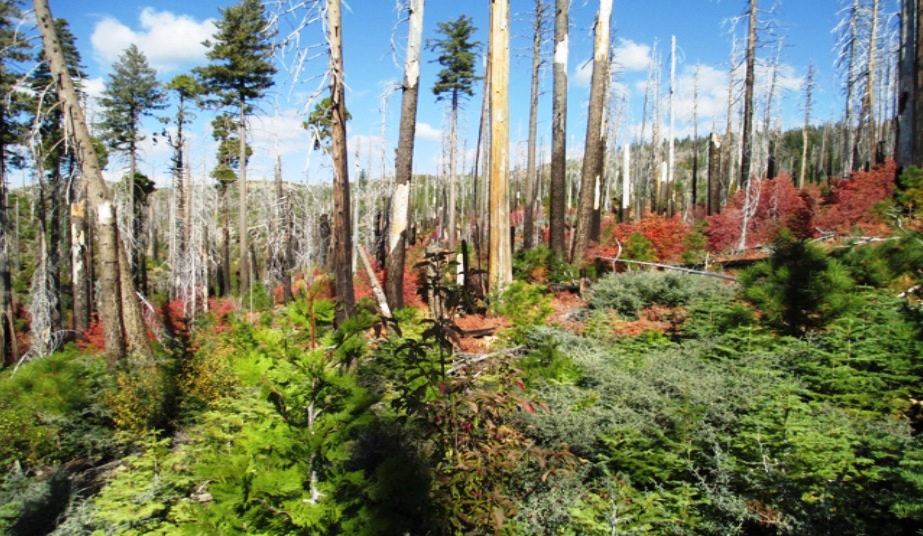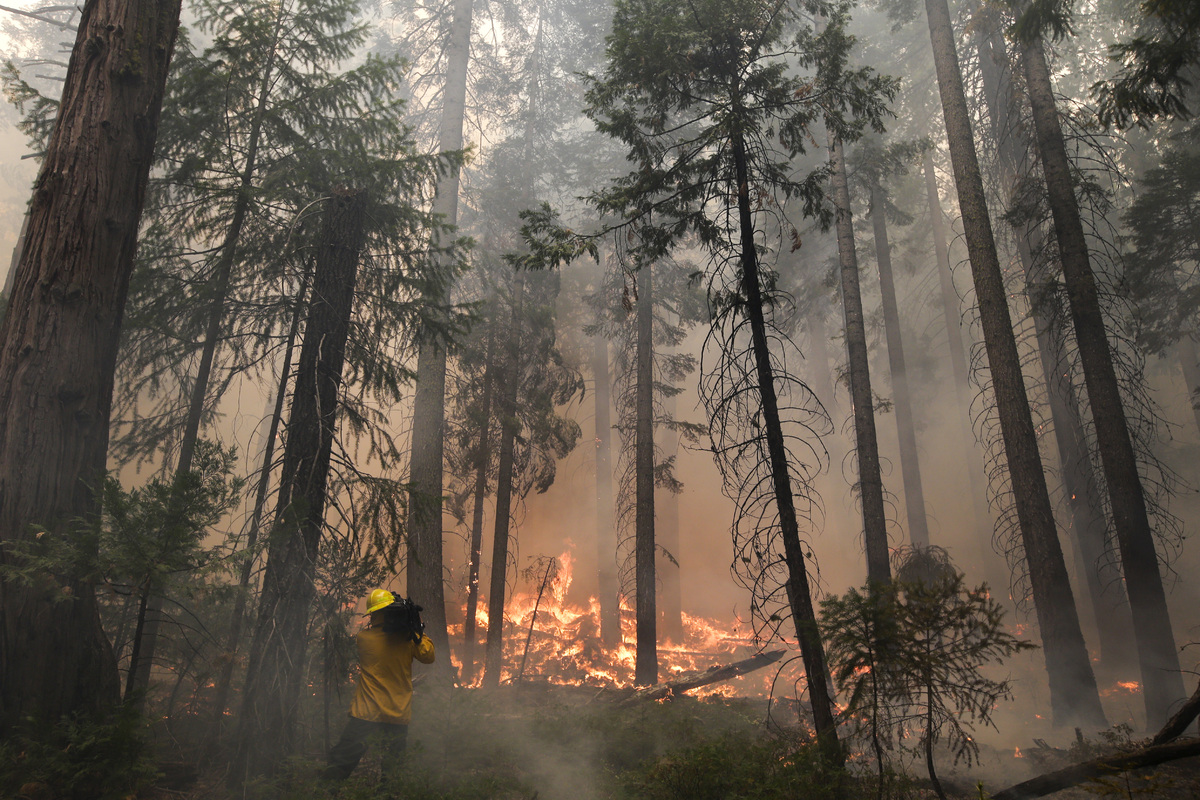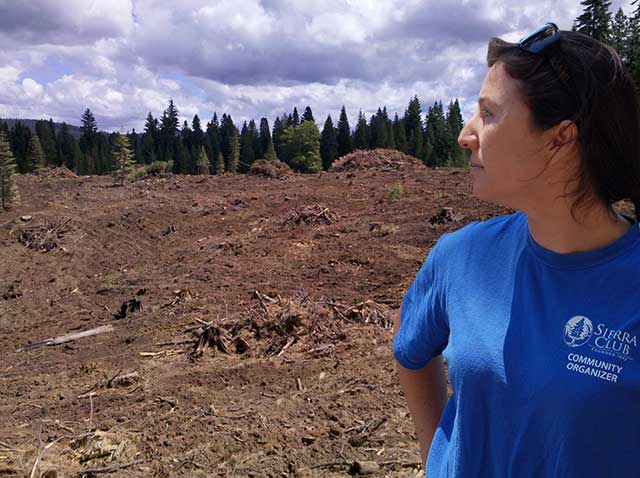Current News:
King Fire Restoration Ignores Ecology, Calls for Logging, Tree Plantations & Herbicides

Natural Regeneration After a Severe Fire

Restoring Natural Fire Intervals
What You Can Do?
Clearcutting during drought and climate change, seriously?

When Governor Brown traveled to Echo Summit on April 1 to announce the first mandatory water cutbacks in the state's history, he traveled through a Sierra watershed denuded by clearcuts like the one pictured above. During the press conference, he measured the Sierra snowpack at 5% of normal and said, "This historic drought demands unprecedented action ... as Californians, we must pull together and save water in every way possible." Yet why does the state continue to allow extensive clearcutting throughout our headwaters forests, exposing the precious snowpack to evaporation and rapid, early runoff?
Water that should trickle down through the forests to fill our reservoirs and supply water to our homes, farms and businesses throughout the dry months is instead being squandered. Clearcutting scrapes the land bare of trees, compacts and dries out the spongelike living soil, and uses toxic herbicides to grow a commercial tree crop. Despite harmful impacts to water, wildlife and the climate, the California Department of Forestry and Fire Protection (CALFIRE) approves on average 65,000 acres of clearcut and other plantation-forestry logging plans filed annually by a few private timber companies.
Don't let our water supply be trashed by irresponsible logging and private tree farm profits at the public's expense. California can't afford more clearcutting. Please sign our updated petition and share widely. Help us reach our goal of 50,000 signatures.
TELL GOV. BROWN: PROTECT OUR WATER RESOURCES. STOP CLEARCUTTING CALIFORNIA'S FORESTS!

Deforestation is the fourth largest contributor to climate change. Clearcutting both reduces the amount of carbon forests can retain, and releases greenhouse gases into the atmosphere. Every clearcut is like a puncture in our planet's lungs.
That's why forest defenders are lining up to demand that the state's Forest Carbon Plan counts the carbon loss due to clearcutting and recommend selective logging as a less ecologically harmful method of meeting our demand for wood products.
The science is clear: older, maturing trees suck and store carbon better than tree plantations and the wood products they produce. Go figure! Real forests win again! Read More: Hot Air: Myths and Facts about Climate Change and Forests
WRITE LETTERS TO THE EDITOR
Letters to the editor are an effective way to alert the public that our forests – and the water, wildlife, and climate they sustain - are being threatened by destructive clearcutting and factory tree farming. Please contact sue.lynn403[at]gmail.com if you are interested in writing letters.
We need your support!
Follow us on Twitter@noclearcut and Facebook StopClearcuttingCA
Sierra Club Stop Clearcutting California Campaign
www.sierraclub.org/clearcutting
View the recent Stop Clearcutting California
e-newsletter upon which this material is based.
New Policy:
Sierra Club Policy on Forest Biomass Energy Plants
For many years Sierra Club activists had been uncertain whether they were free to participate in a meaningful way on behalf of the organization in considering proposals for biomass plants that would burn products from forest restoration or fuels management and produce energy and/or heat. The Sierra Club's End Commercial Logging (ECL) Policy was interpreted by some members as precluding our ability to support the removal of any and all forest-generated materials from public lands if it would be sold for any purpose.
This uncertainty was resolved in 2012, when the Sierra Club Board of Directors adopted the ECL Policy Guidelines and attached language noting that the guidelines "would not restrict the Sierra Club from supporting ecological restoration or fuels reduction projects that help protect communities or enable the safe reintroduction of fire. As long as a project is designed to enhance forest ecology and fire resilience, whether or not some of the costs are recouped by selling by-products such as small diameter wood, chipped material, or other wood residue should not influence our support.” (Minutes, Sierra Club Board of Directors, November 17, 2012)
Contact the Webmaster

